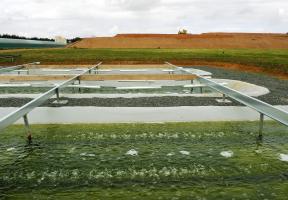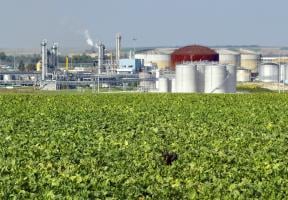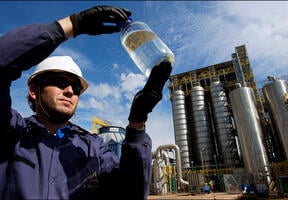Wood Energy and French Forest Management
10 min read
Over the coming years, wood is set to play an increasing role in energy production. But does this put French forests at risk? Experts at the French National Forests Office (ONF) and the French Renewable Energies Syndicate (SER) do not see any cause for concern. They believe that there is huge scope to use wood as an energy source and that forest management will improve as a result.

© THINKSTOCK - France's forest stock is the third-largest in Europe in terms of volume of wood, and expanding every year.
Forest management in France is a long-standing concern. In 1346, King Philip VI of France passed the Ordinance of Brunoy, which was intended to ensure that "forests and woods would perpetually sustain themselves in good condition". In doing so, he unknowingly introduced the very modern concept of " ", which is now common parlance in both French and English.
Unsurprisingly, the meaning of "good condition" has changed significantly over the centuries. Under the Ancien Régime, it meant maintaining fertile ground for hunting and ensuring there were sufficient trees for shipbuilding. In the 19th century, it was about meeting the harvest‑intensive needs of major wood consumers, such as the manufacturing, mining and building sectors. Today, the aim of forest management is to capture CO2 and protect while ensuring sufficiently attractive landscapes to develop tourism.
One-Third of French Territory
Today, France's forest stock is the third-largest in Europe in standing wood volume, behind Germany and Sweden.
At 16.6 million hectares (1 hectare = 10,000 square meters), it covers one-third of metropolitan France. More than 4 million hectares are publicly owned, one-third by the French State and two-thirds by regional authorities such as municipalities. The remaining almost three-quarters are divided among 3 million private owners. In addition, France has a significant forest stock spanning some 6 million hectares in its overseas departments, mostly in French Guiana.
The forests are harvested very differently, depending on who owns them. In state-owned forests, 100% of volume increment is harvested under the responsibility of the ONF. This figure falls to 80% for forests owned by regional authorities and 30% for privately-owned forests, which are often too small to generate sufficient profitability for owners.
Because wood is used less often by industry today, only around half of forest potential is being harvested. This has resulted in French forests doubling in size since 1827, albeit unevenly: some areas see lots of harvest activity and others none at all.
Forest Growth
The three main uses of wood are:
- Construction (35% of total use), which uses the widest parts of trunks (the stem) for joinery and carpentry.
- Manufacturing (20%), which uses smaller trunks to manufacture wood pulp for making paper, chip board (also called pulpwood), poles and railroad ties.
- Energy (45%), which uses coppices or crowns (the branches) for domestic and industrial heating.
Toward More Widespread Use
For the SER, there is significant scope to expand the use of wood energy. However, there are two main objections: harvesting weakens biodiversity by exposing ground-level ecosystems; and it results in less attractive landscapes, producing a negative effect on tourism. The SER claims that these disadvantages are offset by the fact that responsible forest management involves regularly replanting saplings and protecting the soil2. However, forests where significant harvesting takes place, such as the Landes Forest developed under Napoléon III, attract far fewer walkers than "wilder" forests.
A growing number of households are using wood heating, and many towns are putting in place wood-based district heating systems. The boilers are quick to build and underground pipes for transporting the heat are often laid at the same time as other large-scale projects are carried out, such as constructing tramways or roads.
Minimum Distances
The boilers generally burn woodchip, which is made by crushing branches and coppices on site in the forest. The shredded material is discharged directly into trucks, before being transported and unloaded into the boilers' storage tanks, generally within a radius of 150 kilometers. The aim is to keep the distance between forest and boiler to a minimum, in order to limit energy use. Modern boilers are equipped with dust extraction systems that prevent fine particles from being released into the atmosphere.
In its multi-year energy plan (PPE), the French authorities set ambitious objectives for both sectors, particularly with respect to district and industrial heating:
- Raise consumption by 50% between 2015 and 2023, from 9.2 million metric tons of oil equivalent to 13 or 14 million metric tons of oil equivalent.
- Increase consumption in the district and industrial heating sector almost threefold.
- Progress from 8 million to at least 9 million households equipped with wood burning systems, but without increasing raw material consumption.
Sources :






















